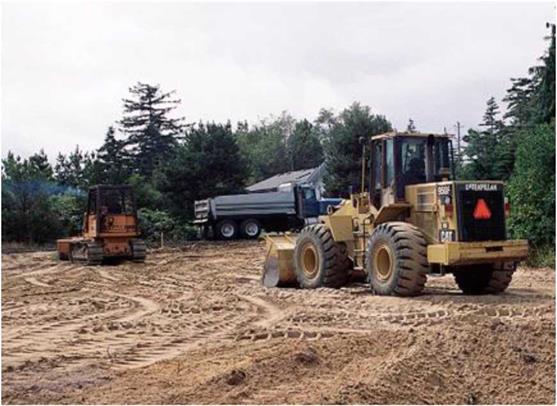STARTED
Site, Design, Permits, and Preparation
Building a house is a long journey, and one of the most important characteristics you can possess is optimism. In this context, I often think about President Jimmy Carter, who has done so much to promote the work of Habitat for Humanity. Over the years, he and his wife Rosalynn have helped build nearly 3,000 houses in the sincere belief that decent housing can be made available to every human being. As you take your first steps toward building a house, remember Mr. Carter’s optimistic attitude, and make it your own.
The homebuilding process can be intimidating, especially if you haven’t been through a house construction project from start to finish. This book is here to help you. By gaining a good understanding of when, why, and how things are done, you’ll also gain confidence in your ability to build a house that’s comfortable, functional, and affordable. Take care, and hold on to your optimistic attitude. Enjoy the step-by-step journey and all the people who help out along the way.
The first step in building a house is finding a place to put it. This is not a step to be taken lightly. There are many factors to consider, not the least of which are the exact location of property lines, the setback and other zoning requirements (the distance a house must be set back from property lines), and whether there are any easements or restrictions on what or where you can build.


extra precautions. Learn about the lot’s zoning, whether it’s situated in a flood plain or on a wetland, and whether any hazardous materials are, or have ever been, present. Removing asbestos debris or an underground oil tank can be very expensive.
Also check to see whether utilities are in place—water, water meter, sewer or septic system, electricity, gas, and telephone and cable lines. When we first moved to Oregon, I inquired about a two-acre site near where we now live. The city water lines stopped 14 mile away from the property, and to drill a deep well or extend water lines to the new site would have
cost a small fortune. We looked elsewhere. Be sure to check with the local building department (as well as the health, zoning, wetlands, and any other local departments that must issue approval for a construction project) about any potential lot. This investigative work can save you a lot of time and money. Make sure you’ve done all your homework to determine a lot’s suitability before you buy.
Particularly in cities, finding a suitable lot can be a daunting task. The price of the property can sometimes be the biggest impediment to building an affordable house. I know of a couple of marginally suitable building lots in the Bel Air section of Los Angeles that recently sold for $258,000 each. Both of those lots are pitched so steeply that each one will require at least $150,000 just to prepare for construction. That’s $400,000 before the owners can even start building! Obviously, most of us have to look elsewhere. There’s no easy way to find the “perfect” lot. Check with realtors, follow up on newspaper and online ads, let friends
Heavy equipment readies the site. Initial site preparation is usually done with heavy equipment because of the sheer difficulty of clearing, grading, and digging by hand.
 [Photo © Larry Haun]
[Photo © Larry Haun]






Leave a reply